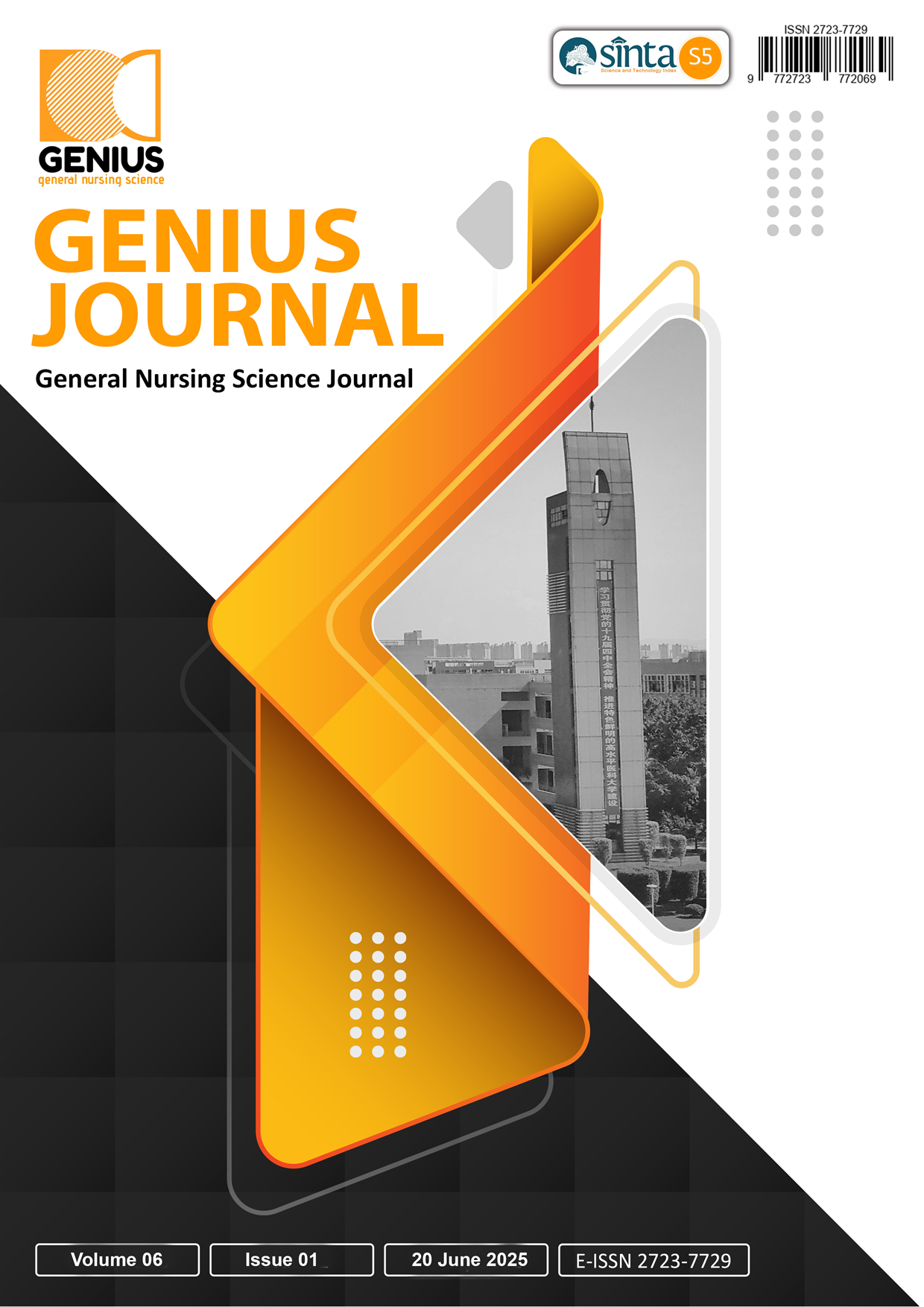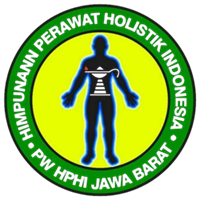The Effectiveness of Lemongrass Aromatherapy in Reducing Dysmenorrhea Pain
DOI:
https://doi.org/10.56359/gj.v6i1.630Keywords:
dysmenorrhea, lemongrass aromatherapy, non-pharmacological interventionAbstract
Introduction: Dysmenorrhea is a common menstrual complaint among adolescent girls, often impacting daily activities and emotional well-being. Non-pharmacological interventions, such as aromatherapy, are gaining attention for their potential in pain management. Lemongrass (Cymbopogon citratus) contains compounds with analgesic and calming properties that may reduce menstrual pain.
Objective: This study aimed to evaluate the effectiveness of lemongrass aromatherapy in reducing dysmenorrhea pain intensity among adolescents.
Method: An experimental study using a one-group pre-test post-test design was conducted at Al-Riyadl Islamic Boarding School, Cipanas, from March to May 2025. A total of 30 female adolescents were selected through accidental sampling. Pain intensity before and after the aromatherapy intervention was measured using the Numerical Rating Scale (NRS). Data were analyzed using univariate and bivariate methods.
Result: The average pain intensity before aromatherapy was 15.50 (SD = 8.803), which significantly decreased to 1.23 (SD = 7.281) after treatment. Statistical analysis revealed a p-value < .001, indicating a significant reduction in pain.
Conclusion: Lemongrass aromatherapy is effective in significantly reducing dysmenorrhea pain among adolescents. Its natural, accessible, and low-risk characteristics make it a promising complementary therapy, particularly in settings with limited access to conventional medical care.
Downloads
References
Andriyani, S., Sumartini, S., Afifah, V., & Madya, R. (2020). Gambaran pengetahuan remaja madya (13–15 tahun) tentang dysmenorrhea di SMPN 29 Kota Bandung. Karya Tulis Ilmiah, 121.
Aprilia, M., Prastia, N. H., & AS, M. (2022). Prevalensi dan faktor yang berhubungan dengan dismenore pada remaja putri. Jurnal Kesehatan Reproduksi, 13(2), 87–93.
Aprilia, T., Prastia, T., & AS, N. (2022). Hubungan aktivitas fisik, status gizi dan tingkat stres dengan dismenore. Jurnal Kesehatan, 296–309.
Azhari, N., Yusriani, Y., & Kurnaesih, E. (2022). Pengaruh edukasi melalui media leaflet terhadap pengetahuan siswa tentang kesehatan reproduksi remaja. Jurnal Riset Media Keperawatan, 5(1), 38–43.
Cui, J., et al. (2022). Inhalation aromatherapy via brain-targeted nasal delivery: Natural volatiles or essential oils on mood disorders. Frontiers in Pharmacology, 13, 1–15. https://doi.org/10.3389/fphar.2022.860043
Hamzah, M. (2021). Analisis faktor risiko kejadian dismenorea pada dewasa muda di Kota Makassar. (n.p.)
Herlina, A. I. (2020). Universitas Muhammadiyah. Artikel, 1–5.
Iacovides, S., Avidon, I., & Baker, F. C. (2015). What we know about primary dysmenorrhea today: A critical review. Human Reproduction Update, 21(6), 762–778. https://doi.org/10.1093/humupd/dmv039
Ju, H., Jones, M., & Mishra, G. (2014). The prevalence and risk factors of dysmenorrhea. BJOG: An International Journal of Obstetrics & Gynaecology, 121(3), 340–348. https://doi.org/10.1111/1471-0528.12328
Kurniawan, T., Sari, R. M., & Pratiwi, R. (2019). The effect of aromatherapy on reducing dysmenorrhea in adolescent girls: A quasi-experimental study. Indonesian Journal of Health Research, 1(2), 45–51.
Lee, M. S., Choi, J., Posadzki, P., & Ernst, E. (2011). Aromatherapy for health care: An overview of systematic reviews. Maturitas, 71(3), 257–260. https://doi.org/10.1016/j.maturitas.2011.02.007
Oktorika, P., Indrawati, & Sudiarti, P. (2020). Hubungan indeks massa tubuh (IMT) dengan skala nyeri dismenorea pada remaja putri di SMA Negeri 2 Kampar. Jurnal Ners Universitas Pahlawan, 122–129.
Puspita, D. S. (2019). Analisis faktor yang mempengaruhi kesiapan menarche pada siswi kelas IV, V, dan VI di MIT Raudhlatul Ulum Depok 2019. (n.p.)
Puspita, N. (2019). Pengaruh dismenore terhadap aktivitas belajar siswi SMA. Jurnal Kesehatan Wanita, 7(1), 22–28.
Putri, A. D., & Wulandari, D. (2019). Pengaruh aromaterapi lavender terhadap penurunan nyeri dismenore pada remaja putri. Jurnal Keperawatan Indonesia, 22(1), 12–18. https://doi.org/10.7454/jki.v22i1.45
Putri, M. T., Aditama, D. S., & Diyanty, D. (2019). Efektivitas aromaterapi sereh (Cymbopogon citratus) dengan teknik relaksasi genggaman jari terhadap penurunan nyeri pasca sectio caesarea. Wellness and Healthy Magazine, 1(2), 187–192.
Rahayu, S., Suciawati, A., & Indrayani, T. (2021). Pengaruh edukasi tentang kesehatan reproduksi remaja terhadap pengetahuan dan sikap seksual pranikah di SMP Yayasan Pendidikan Cisarua Bogor. Journal for Quality in Women’s Health, 4(1), 1–6.
Rahayuningsih, T. (2020). Efektivitas aromaterapi sereh dalam mengurangi nyeri haid pada remaja putri. Jurnal Ilmu Keperawatan, 8(2), 134–141.
Rahmawati, I., Lestari, D. S., & Andriani, N. (2019). Efektivitas aromaterapi sereh (Cymbopogon citratus) terhadap intensitas nyeri haid pada remaja putri. Jurnal Kesehatan Holistic, 13(2), 110–117.
Rambi, C. A., Bajak, C., & Tumbale, E. (2019). Pengaruh aromaterapi lemon (Citrus) terhadap penurunan dismenore pada mahasiswi keperawatan. Jurnal Ilmiah Sesebuna, 3, 27–34. https://doi.org/10.54484/jis
Sari, D. P., & Handayani, L. (2019). Pengaruh aromaterapi terhadap nyeri menstruasi melalui regulasi neurotransmitter. Jurnal Keperawatan Respati, 6(2), 89–96.
World Health Organization. (2021). Adolescent health: Menstrual health fact sheet. https://www.who.int/news-room/fact-sheets/detail/adolescent-health
Yuliana, D., Sari, N. P., & Maulidya, D. (2019). Pengaruh aromaterapi terhadap stres dan kualitas tidur: Tinjauan sistem limbik. Jurnal Psikologi Kesehatan, 8(2), 78–84.
Downloads
Published
How to Cite
Issue
Section
License
Copyright (c) 2025 Rahmawati, Fify Aulia Nahya

This work is licensed under a Creative Commons Attribution 4.0 International License.




















